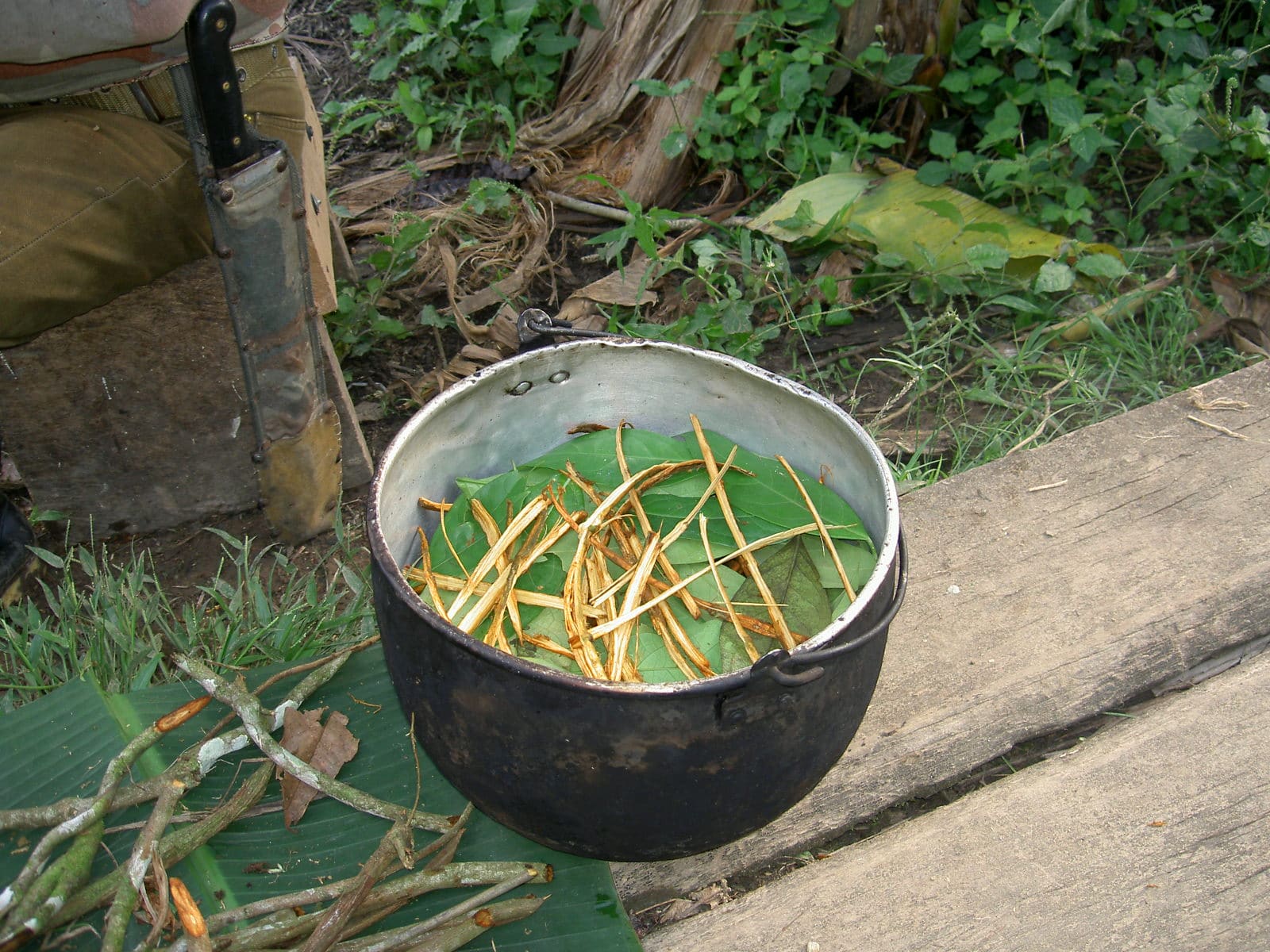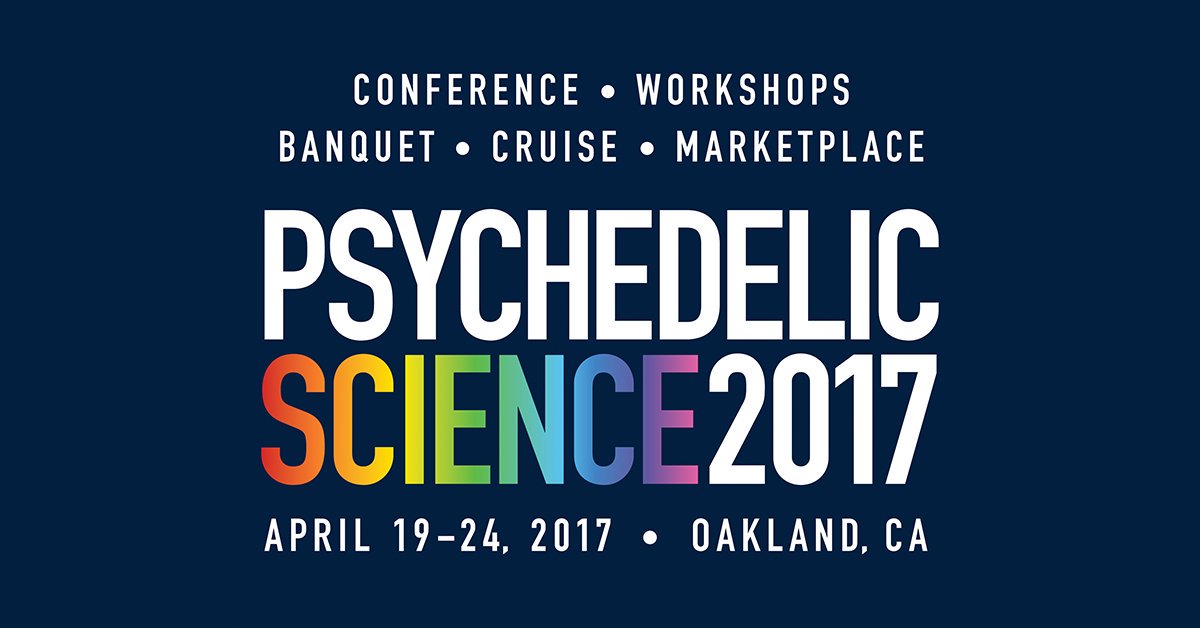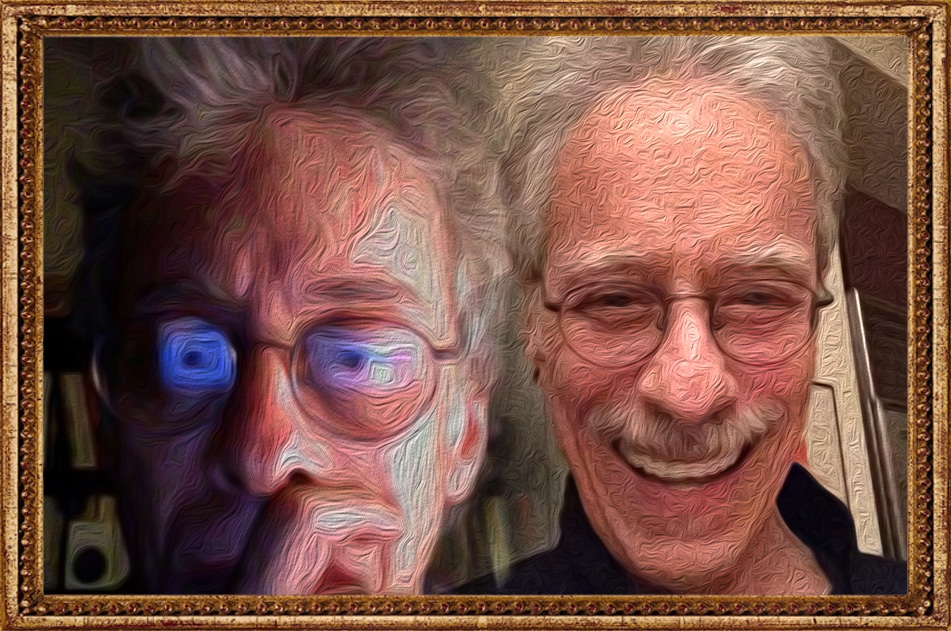
The Temple of the Way of Light offers a safe retreat in which to explore the benefits of ayahuasca.
Sometimes when you enter the heart of darkness, it turns out to be a heart of light and a whole new world opens up to you. And then, in the heart of light, darkness reappears and the cycle continues ever onward.
Matthew Watherston is the founder of the Temple of the Way of Light, an ayahuasca retreat center located in the heart of the Amazon that has been offering healing ceremonies for nearly ten years. In this exclusive series of interviews, he shares his experiences, challenges, and insights about traditional ayahuasca use and the emerging Western interest and research into it. In this first conversation, Matthew discusses finding his calling in the heart of the jungle and the difficulties that can happen when Western seekers interact with traditional Amazonian cultures.
Thank you for taking the time to speak with us, Matthew. Can you give us a glimpse into your first trip to the Amazon and how you were introduced to ayahuasca and called to start a retreat center?
I first came to the Amazon in January 2007 to attend a retreat with a mestizo healer. I had no intentions of developing a healing center but had come simply to heal psycho-emotional issues that had plagued me since adolescence and to explore an overwhelming curiosity in genuine shamanism (not the New Age versions that were on offer in the UK at the time). I had a profound and unexpected experience on this retreat that gave birth to the Temple of the Way of Light.
I shared the visions that I experienced with the mestizo healer, who became rather excited that a naïve foreigner was interested in spending money to build a center in the Amazon! This started a nearly two-year relationship with him, and I essentially built the Temple around him. However, I experienced many issues working with him, which forced me into a challenging education in Amazonian shamanism, highlighting many of the issues and more negative facets of the shamanic culture in Peru.
I am now able to look back retrospectively and see the blessing in these difficult first years. Despite my disagreement with the questionable approach of my first maestro, I remain grateful that I learned much from him by experiencing first-hand many of the problems that have become well-known about shamanism in the Amazon—power, greed, deceit, sexually inappropriate behavior and witchcraft. It took me two years through a roller coaster ride of obstacles, challenges, and immense heartache to eventually unravel myself from the grip of the manipulative energies of this shaman.
The turning point for the Temple was the arrival of my now wife, Klara, who came on her own in May 2008. She stayed for several months at the Temple, dieting with a small team of male healers who were there at the time. She also encountered many issues and questioned the authenticity of their motivations. When I arrived in July, we fell instantly in love—all rather clichéd—and even after eight years of being together, our relationship continues to blossom! I firmly believe that our union, balance (of masculine and feminine), and profound love for each other are the foundation of the success of the Temple, coupled by working with female Shipibo healers, and, of equal importance, the passionate work of many other inspired and committed people who have joined us over the years.
It was Klara’s idea at that time to invite female healers. However, finding them then was extremely difficult as shamanism in the Amazon is typically a male activity, despite many women being healers within their families. In the end, due to increasingly dark situations with the male shamans, we had to shut the Temple down in October 2008, which was one of the hardest decisions of my life.
Serendipity then rang. I received a call from a friend in January 2009, inviting me to meet a group of eight female Shipibo healers in Pucallpa. The Shipibo are from the Ucayali region south of Iquitos and are renowned for their expertise with ayahuasca. I attended two ceremonies with these grandmother healers and felt like I had found the ‘gold at the end of the rainbow,’ an entirely different experience to anything that I had encountered in the previous two years. We have worked since that time solely with Shipibo healers, initially with seven female healers and one male, and then over the years balancing with slightly more men.
That’s wonderful; the importance of balancing masculine and feminine energies seems to be a recurring theme in molding positive psychedelic journeys. For the Shipibo, what is their perspective on using ayahuasca to heal Westerners?
We have worked with many Shipibo healers over the years. It is not possible to say that they all have the same perspectives regarding Westerners’ use of ayahuasca. The older healers initially seemed bemused that people would come from such long distances, although they had no understanding then of the issues faced in the West in terms of poor psycho-emotional-spiritual healthcare, the lack of connection with the natural/plant kingdom that we typically experience in the West, and the fact that the use of entheogenic plants is demonized in our societies.
Many had not worked with foreigners previously and thoroughly enjoy the work, which they often find simple. Many village healers are used to working with much more complicated cases in their communities, from life-threatening diseases to shitana (Shipibo word for witchcraft). Treating foreigners, who are mostly coming due to more basic energetic and psycho-emotional issues, is a less complicated process. According to the Shipibo, the principle issue faced by Westerners is our tendency to have over-complicated and confused minds. We think too much!

Image courtesy Temple of the Way of Light
Over the years we have tried to bring in a balance between older healers and younger up-and-coming healers. Despite the fact that shamanism in the Amazon has been on the decline, with many youth succumbing to the lure of the city and western lifestyles, there are still young healers, the children or grandchildren of the elders, who are called to the medicine at an early age. They often start their apprenticeships in their early teens, so by the time they are 30 years old, they may have over a decade in training. Their youthful energy and gusto to work and heal others brings a very beautiful balance with the elder healers in ceremony. It is important to us to support the continuance of this profound healing tradition as much as we can, and the youth are obviously the future elders in the making.
The perspectives of the younger healers are often very different to the elders. They are more openly concerned about environmental and global issues, are able to articulate their ideas more clearly, and typically are more keen to learn about the issues that are faced in the West. They are also generally more willing to talk about their traditions than the elders who, understandably, have been very reticent to share their knowledge, the only ‘natural resource’ left in Peru that has not been completely exploited by westerners.
Is Western appropriation and exploitation of ayahuasca a big concern for them? What kind of training do authentic Shipibo healers undergo to work with ayahuasca?
A primary theme shared both by the elders and the younger healers is a concern about the way ayahuasca healing is practiced outside of the Amazon. In the Shipibo tradition, it takes typically ten years to become a fully ‘qualified’ and authorized healer, after an arduous and highly challenging apprenticeship that could be considered a parallel to Western medical school in terms of the level of commitment, energy, and time that is required to complete the education. The classes in this spirit-assisted rainforest medical school are delivered in the form of plant dietas. The apprentice undergoes dietary retreats, which could be compared in some ways with a visionary quest, in complete isolation for periods of weeks, months, or even years where they eat an extremely restricted diet typically of only yucca (manioc), small non-predatory fish, and plantains. All contact with any other person except their maestro (teacher) is prohibited.
Plant dietas are the process of developing a working relationship with the plant spirit doctors that they will eventually be able to invite into a ceremony to carry out healing, alongside the spirit of ayahuasca. Apprentices move through innumerable tests, exams, and challenges (sometimes life threatening) and over many years develop different specialties and ways of healing subject to their relationship with the plants and their level of commitment. The Shipibo word for ayahuasca is Óni, meaning wisdom or knowledge. Working with Óni is a sacred science that is at best superficially understood in the West. In order to be fully prepared and capable to work to the deepest levels with Óni, one must carry out plant dietas. The Shipibo have various grades and types of healers subject to the level of training that they have carried out.
The initial stage of the apprenticeship is called onántian—a period of curiosity, learning, and discovery. Pupils can learn the physical properties and benefits of plant medicines (called ráo in Shipibo) to become a Raómis—a plant medicine practitioner and class of healer that works with medicinal plants only on the physical realm. Or they can carry out long term plant dietas to become an Onánya—meaning one who has or is with wisdom; another class of healer that works with medicinal plant spirits and other energies to heal on the energetic level and in the spirit realm. Óni opens the connection and communication in ceremony with a multitude of plant and tree spirits and the elements such as wind, earth, water, and fire. The highest level of healer in the Shipibo tradition is a Meráya—a fully realized person, healer, spiritual guide, and knowledge keeper. The main difference between an Onánya and a Meráya is the plant spirit comes into the body of the Meráya whilst the healing is being carried out, and their soul leaves temporarily. There are no longer any Meráya amongst the Shipibo due to the incursion of westernization in the Amazon.
The Amazonian medical system offers ayahuasca healing sanctioned by a culture that holds the medicine in high esteem, where it is practiced in a sacred environment, blessed and supported by the healing enegies of many other powerful Amazonian plant and tree spirits and where it is without fear of criminal prosecution. These Amazonian ceremonies are like checking into a plant medicine hospital where a vast spectrum of other plant and tree spirit doctors are working together with ayahuasca to cleanse, purify, liberate, protect, and illuminate the participants, as well as the ceremony space.
However, it is clear that there is an evolution in ayahuasca practice. Now as the medicine is spreading across the globe and interest in partaking in ceremonies is growing, many people are having profound experiences in Western settings, with Western healers of all traditions. Or deep connections are being made while connecting with ayahuasca alone, bravely exploring the space of universal healing as a solitary adventurer. This expansion is a positive movement, provided ceremonies are held safely, responsibly and with the highest intentions. Ayahuasca ‘wants’ to reach as many people as it can, and not everyone is able to come to the Amazon.
We are visited by many guests who come to the Temple once a year to receive deep healing and then also continue to drink ayahuasca in a local medicine community in their home countries. Some guests find that one retreat per year in the Amazon provides plenty of material to process and integrate for the entire year ahead. Others come to the medicine just once, and find this healing intervention brings them back ‘on track’ in life without the need to drink again. In addition, most Western healers originally trained by Amazonian healers but working in their home countries also regularly return to the rainforest to receive further personal healing, and more training and guidance from their Amazonian teachers.
Our interest at the Temple is to raise awareness not just about the profound benefits of ayahuasca in particular, but also to develop more understanding about the incredible potency of Amazonian healing traditions in general. If one is looking for the most profound experience, the capacity of well intentioned, highly trained Amazonian healers, with their mastery of a vast pharmacopeia of plants, including but not limited to ayahuasca, is unrivaled.











Hello my name is Edward Daly I have been very interested in treatment with psychedelic treatment for a while now. I have continued over and over again trying different medications and treatments. I am very interested in healing and I would like some direction or an answer to where it would be possible to seek treatment. Thank you, Ed